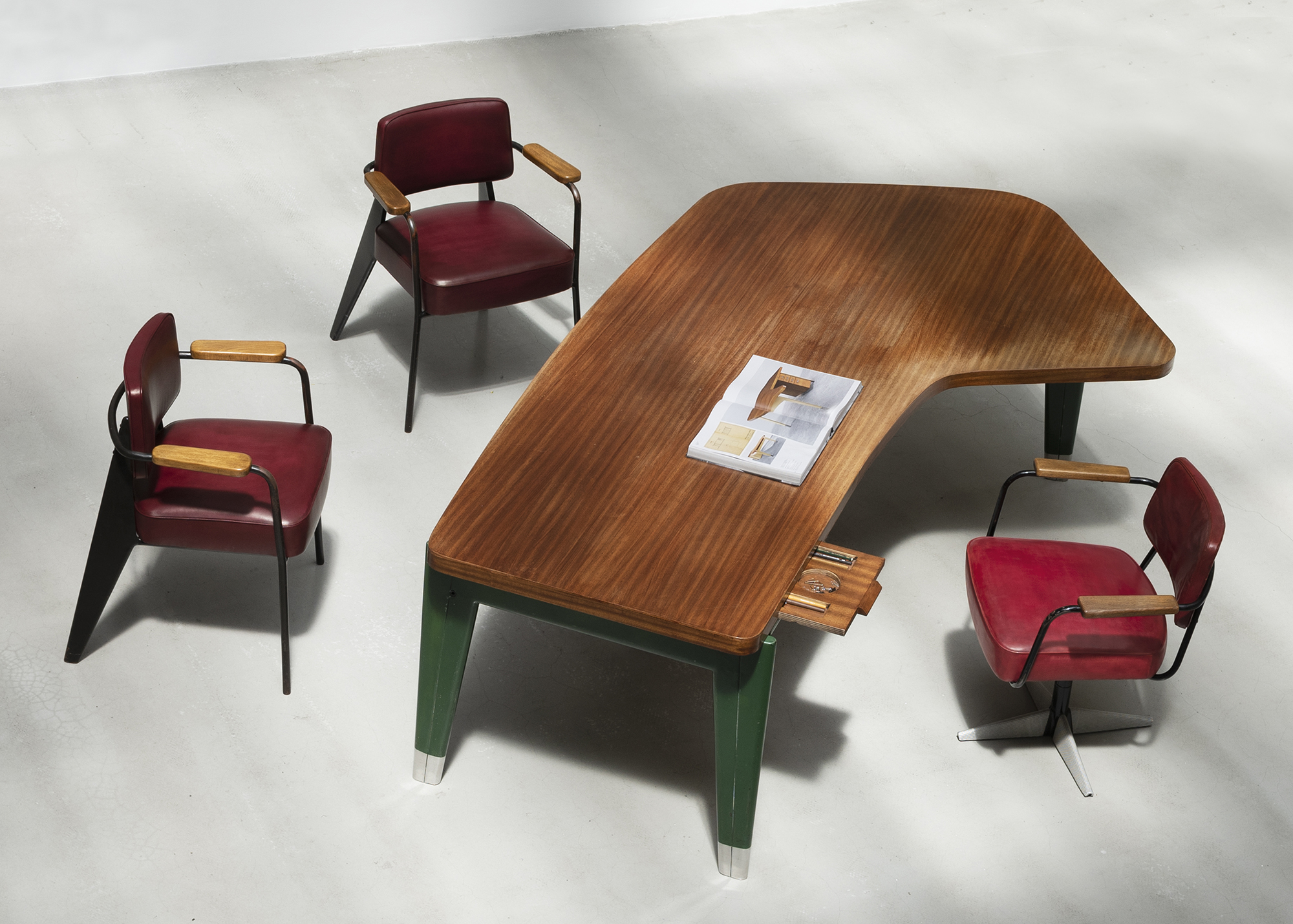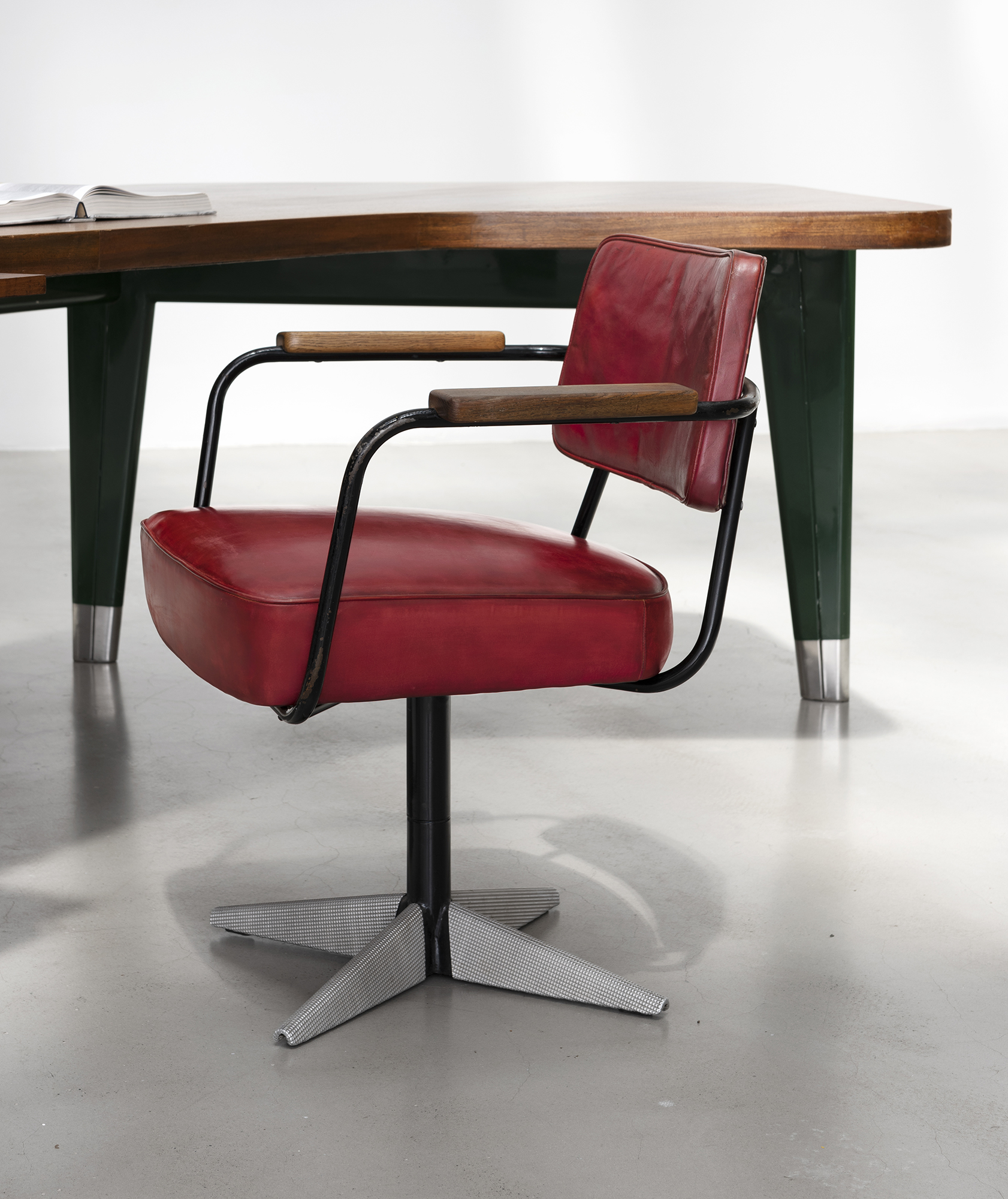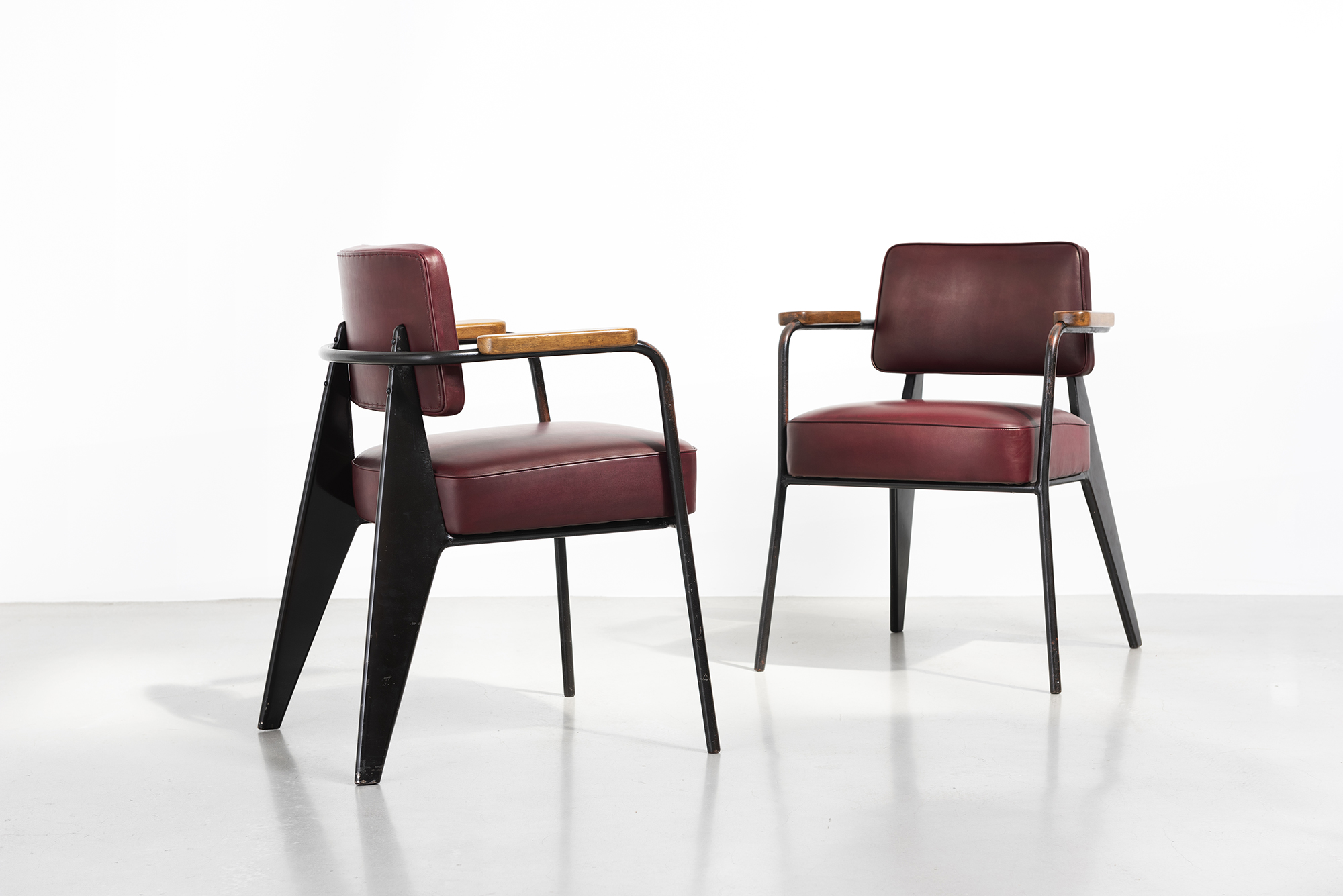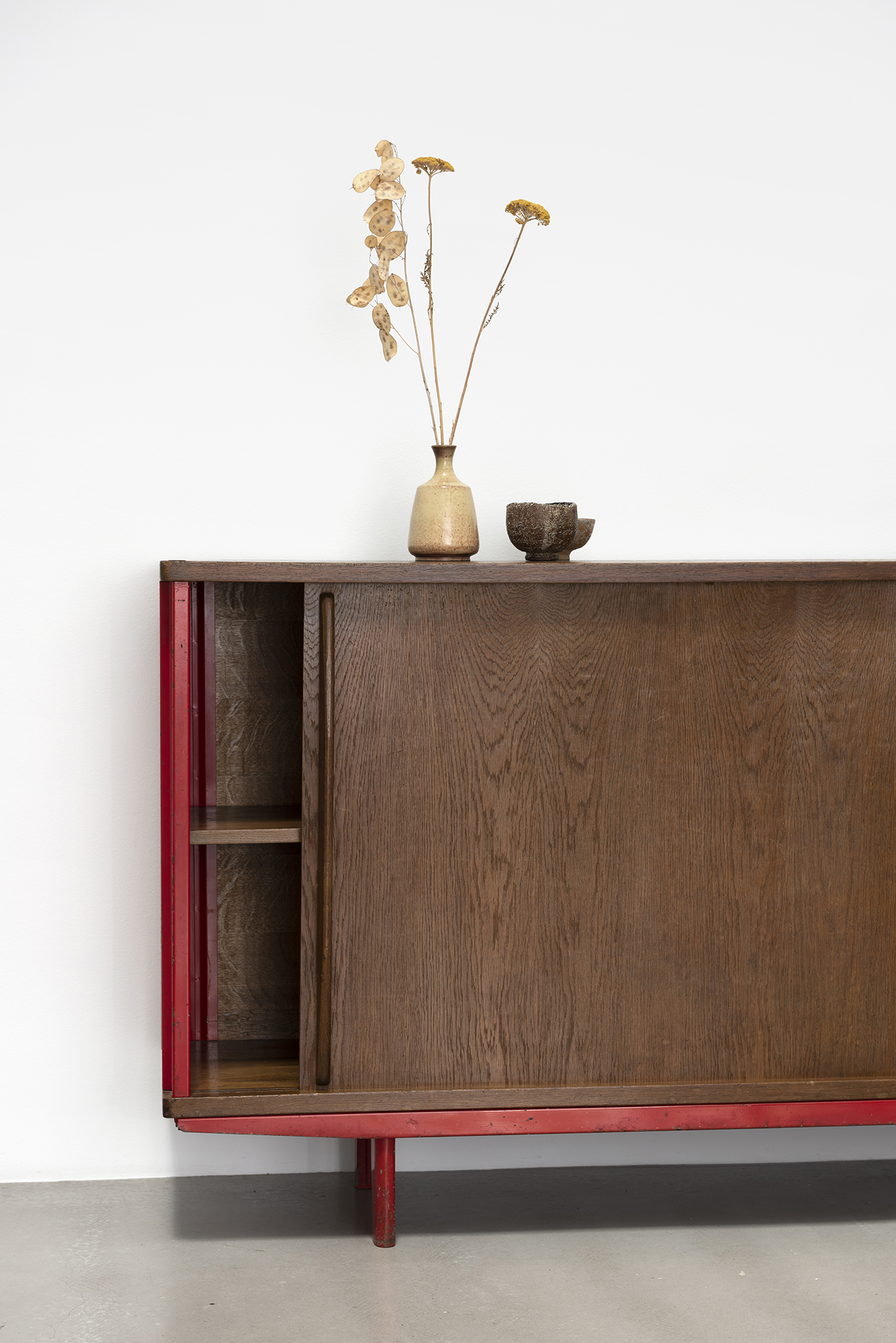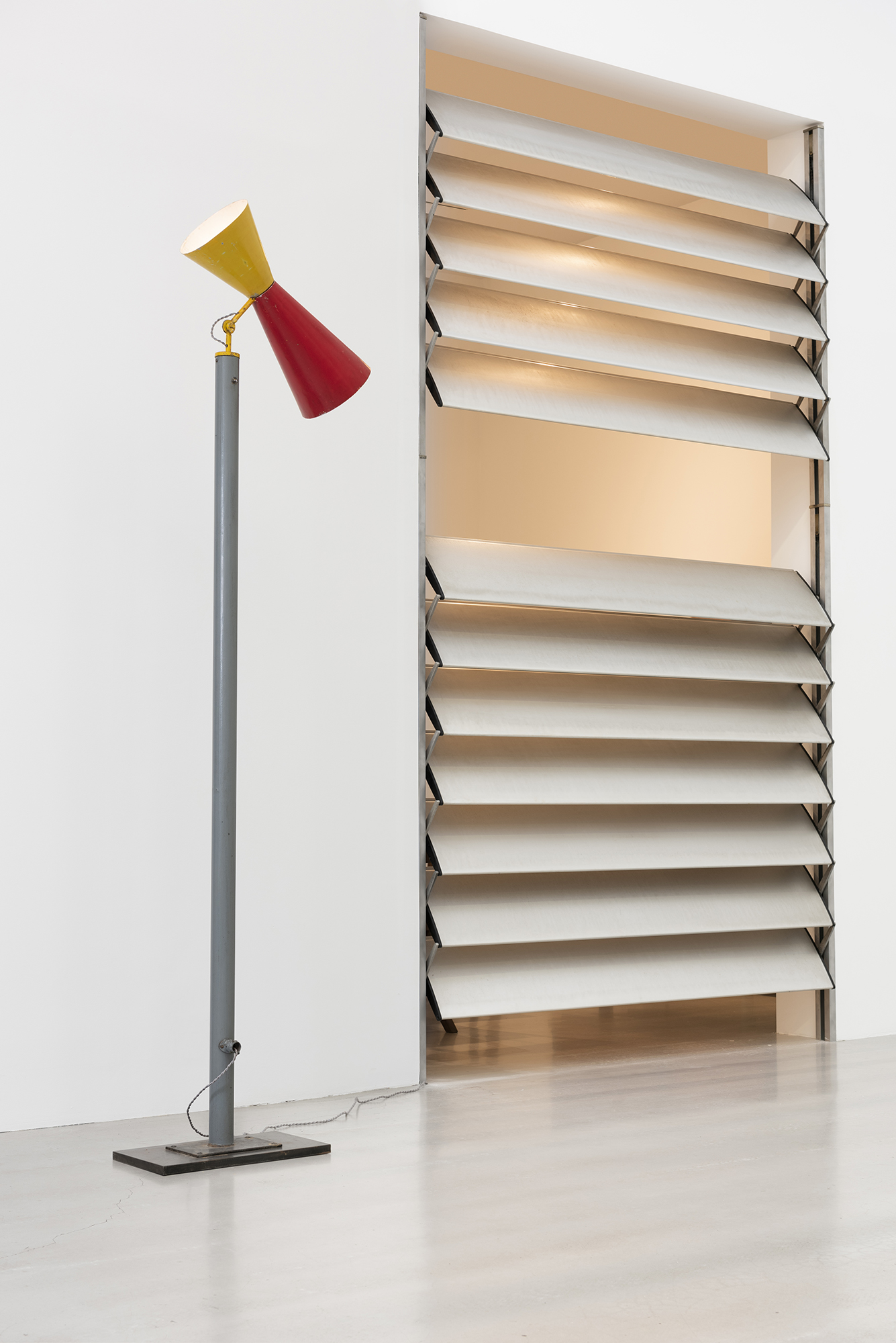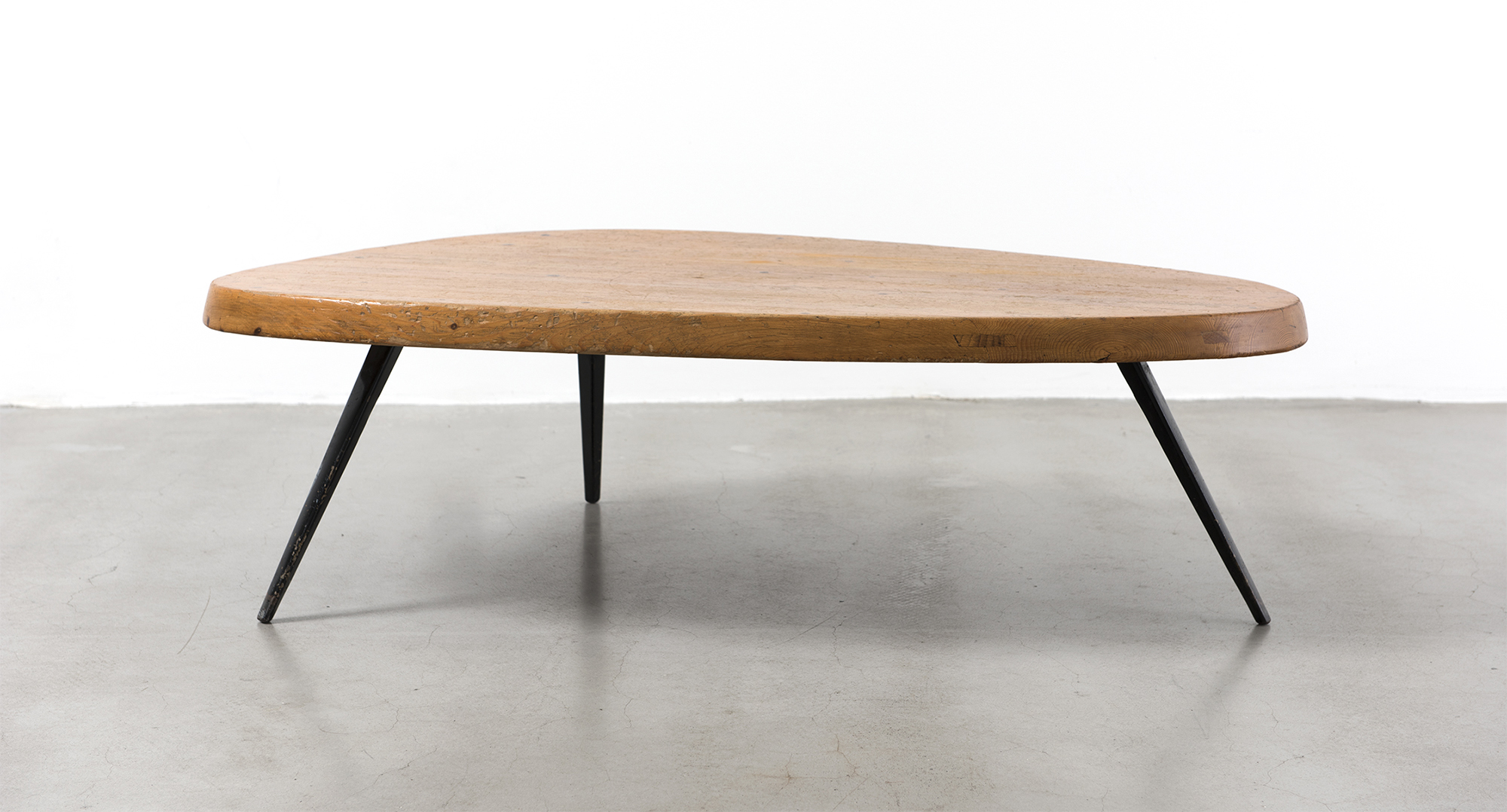“All I have ever made has always been the result of a thought that was instantly constructive.
I have never had a vision or a form in mind, I have no style. I never drew forms. I made constructions that had a form.“
JEAN PROUVÉ
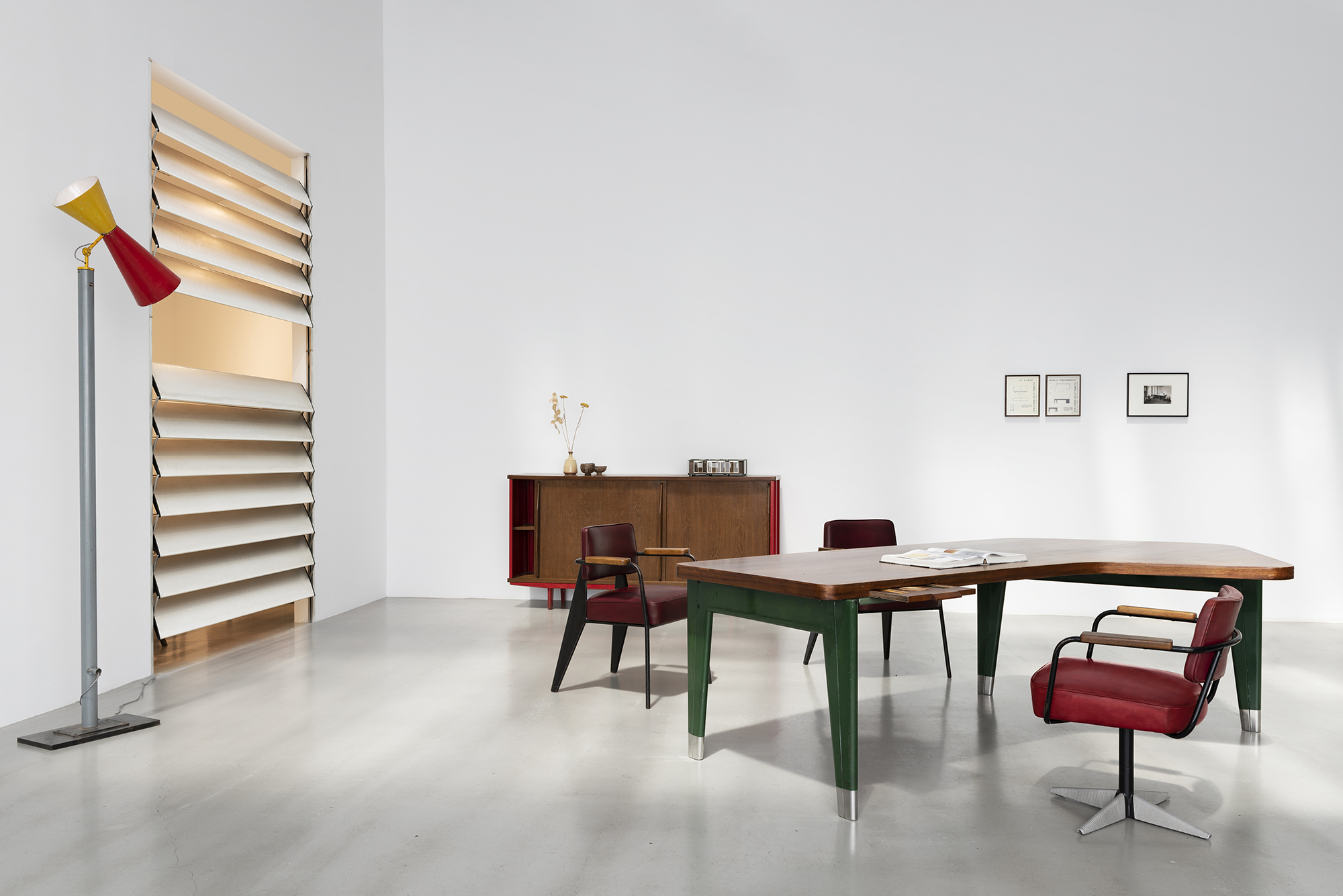
JEAN PROUVÉ,
PRÉSIDENCE DESK NO. 201, CA. 1955
The Présidence desk was a large desk made for company directors, hence its name. Its shape and fittings meant it could be used both as a personal workspace and as a conference table for three to six people. The wide-angle return provided room for documents or, temporarily, for a secretary.
The Présidence model became the emblem of the “architect’s as well as, chairman’s desk”. In the 1950s, it was to be found in the studios of the top architects in Paris and the rest of France, many of whom were Prouvé’s friends and collaborators. It was also supplied to industrialists and in some cases to high-ranking government administrators.
Marketed by STEPH SIMON gallery from 1956 until the early 1970s, only some 30 pieces were made. This version in particular is extraordinary rare as it is demountable and the desk top is in exotic wood, features which make this piece one of a kind.
H. 29.72 x L. 97.24 x D. 60.63 IN.
H. 75.5 x L. 247 x D. 154 CM
JEAN PROUVÉ,
DIRECTION NO. 353 SWIVELING OFFICE CHAIR, 1951
The principle of the swivel seat was adopted in 1944 to complement the office models created during the War.
The tube of the swivel leg was stabilized by an X-shaped pressed steel base while the bent steel tube frame formed the support for the seat, the armrests and the backrest. Initially made in only a few examples, the first model received modifications aimed at improving the rigidity of the frame: crossed tubes under the seat and a continuous bar behind the backrest.
In 1951 the Direction no. 353 swiveling office chair replaced the previous model, with a few details amended to improve comfort and finish. The bent steel of the feet is protected with diamond-point aluminum sheet, encircled by an aluminum tube.
H. 29.13 x L. 26.57 x D. 23.43 IN.
H. 74 x L. 67,5 x D. 59,5 CM
JEAN PROUVÉ,
DIRECTION NO. 352 OFFICE CHAIR, 1951
A new model of office chair appeared in 1939, following that designed for the CPDE (former French electricity provider).
The basic principle was taken up again after the War and used for a special office furniture order: sloping, tapered back legs to which were welded the tubes of the seat frame and of the front legs, the latter being extended to support the solid oak armrests and the back. The first version had a low back set vertically on the seat and a rear bar attached to the top of the base. The rear base was then extended, the back was raised and its support bar curved.
The chair was intended for offices, but also for classrooms, which earned it the sobriquet of “teacher’s chair”. Following a request for greater comfort from STEPH SIMON, modifications were made : the rear leg unit was strengthened by several centimeters so that the user could tilt the chair back and made the position of the back more comfortable.
H. 32.28 x L. 24.61 x D. 25 IN.
H. 82 x L. 62,5 x D. 63,5 CM
JEAN PROUVÉ,
SIDEBOARD NO. 150, CA. 1950
The wood and metal sideboards that emerged from the ATELIERS JEAN PROUVÉ in the 1930s were designed as sets of closed shelves with sliding doors.
Work on them during the War led to the design in 1944 of a demountable household model whose overall characteristics underwent little change. This principle used two vertical, pressed metal sides with grooves into which were slotted shelf racks, these sides then extended by angle returns holding the plywood back. The metal parts were fixed to the top and bottom with tie-rods ensuring overall rigidity.
Although described as “standard” from 1948 onwards, the sideboard quickly gave rise to numerous variations, mainly in terms of the choice of materials.
H. 39.17 x L. 78.94 x D. 17.72 IN.
H. 99,5 x L. 200,5 x D. 8,5 CM
LE CORBUSIER,
DIABOLO STANDING LAMP, CA. 1963-64
This standing lamp designed in 1963 by LE CORBUSIER was primarily intended for the Legislative Assembly and the sailing club in Chandigarh, India. For Le Corbusier planning a new city meant a global approach, so the need to design the furniture for Chandigarh’s public buildings was self-evident. In order to implement this gigantic project, he called in his cousin PIERRE JEANNERET and entrusted him with the supervision of the building process and the designing of most of the furniture, reserving for himself solely the monitoring of the Capitol complex, for which he also designed some of the lights and furnishings.
A symbol of the modernism from the 1950s, the Diabolo standing lamp draws inspiration from the industrial lightning of that era. Its form and features recalls the “Marseille” Wall lamp created in 1954 to equip the apartments of the Cité Radieuse, that also presented this very particular two-coned shape.
Comprised of two different-sized cones emitting both direct and indirect lightning, the moveable lamp-shade allows for a precise orientation of the light beam. The model has been made in different shades reminiscent of the colour palette from Chandigarh’s buildings.
H. 88.19 x L. 20.47 x D. 9.84 IN.
H. 224 x L. 52 x D. 25 CM
JEAN PROUVÉ,
SUN-SHUTTER, 1962-65
The sun-shutter/ventilator units are part of the climate-adaptable systems designed by JEAN PROUVÉ from the 1940’s. With its fixed or adjustable-angle blades, it could be added to existing buildings or be an integral part of a building.
This sun-shutter in aluminum was designed for the La Dullague school complex in Béziers (South of France) conceived to host 3,200 pupils. Most of its buildings were protected from the sun by exterior sun-shutters folding in accordion around a horizontal median axis. This arrangement allowed for a fine-tuning of the light and sunshine of the different rooms, ensuring a pleasant temperature.
The sun-shutters demonstrate the relevance of Prouvé’s approach to mass-produced climate adaptable architecture. This piece perfectly adapts to a contemporary interior as featured in our set-up, creating an incredible interplay between light and shadow that challenges our senses.
H. 75.2 x L. 70.87 x D. 3.35 IN.
H. 191 x L. 180 x D. 8,5 CM
H. 54.92 x H. 70.87 x D. 3.35 IN.
H. 139,5 x L. 180 x P. 8,5 CM
“Tradition was not the enemy of novelty.”
JEAN ROYÈRE
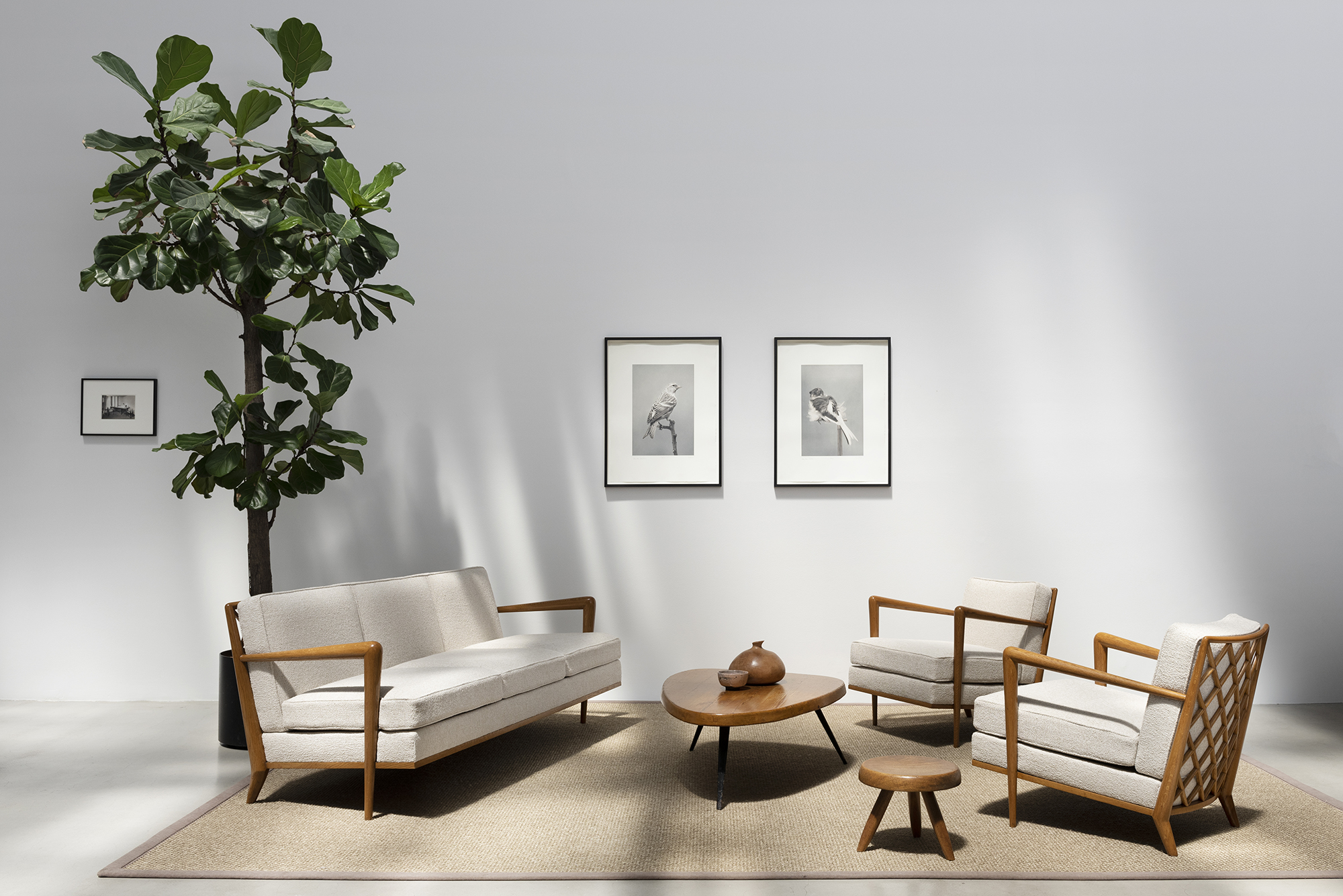
JEAN ROYÈRE,
“OSCAR” CROISILLON SET, CA. 1950
This majestic set comprising a sofa and two armchairs by JEAN ROYÈRE features a rare variant of the Croisillon motif.
The elegant pattern that first appeared in Jean Royère’s design vocabulary in 1938 for the furnishing of a living room in a Belgian private home rapidly became one of the designer’s most iconic motifs. The pattern was mostly used for the furnishing of bourgeois interiors where he took on the challenge of combining antique furniture together with classical interior arrangements.
The delicate motif in diamond-shape, here exceptionally curved and hence giving yet another dimension to the pieces, is an integral component of the ensemble and demonstrates the very best of Jean Royère though its intuitive proportions and refined forms.
The decorative motif of this set adheres to tradition, while taking on a modern sculptural line that greatly suits contemporary interiors.
sofa: H. 29.13 x L. 78.15 x D. 33.86 IN.
H. 74 x L. 198,5 x D. 86 CM
armchairs: H. 27.76 x L. 26.97 x D. 34.25 IN.
H. 70 x L. 70 x D. 86 CM
CHARLOTTE PERRIAND,
“FORME LIBRE” COFFEE TABLE, CA. 1956
The thick table top in solid wood of this low table by CHARLOTTE PERRIAND rests on three tapered feet in bent sheet steel. The gently curved shape and asymmetrical lines of the piece alludes to the influence of Japan on Charlotte Perriand who first started to conceive more rounded wood tables after a long stay in the country. The organic curbs demonstrate a careful observation of nature and the dismissal of symmetry.
Perriand revolutionized modern design with the “Forme Libre” (free form) where curbs were no longer solely representative of the Art Nouveau movement but the embodiment of a new vocabulary rejecting established conventions. She would consider that every shape had a function and used to say that her “Forme Libre” table was “made to make the space sing”.
H. 14.17 x L. 46.46 x D. 30.31 IN.
H. 36 x L. 118 x D. 77 CM

